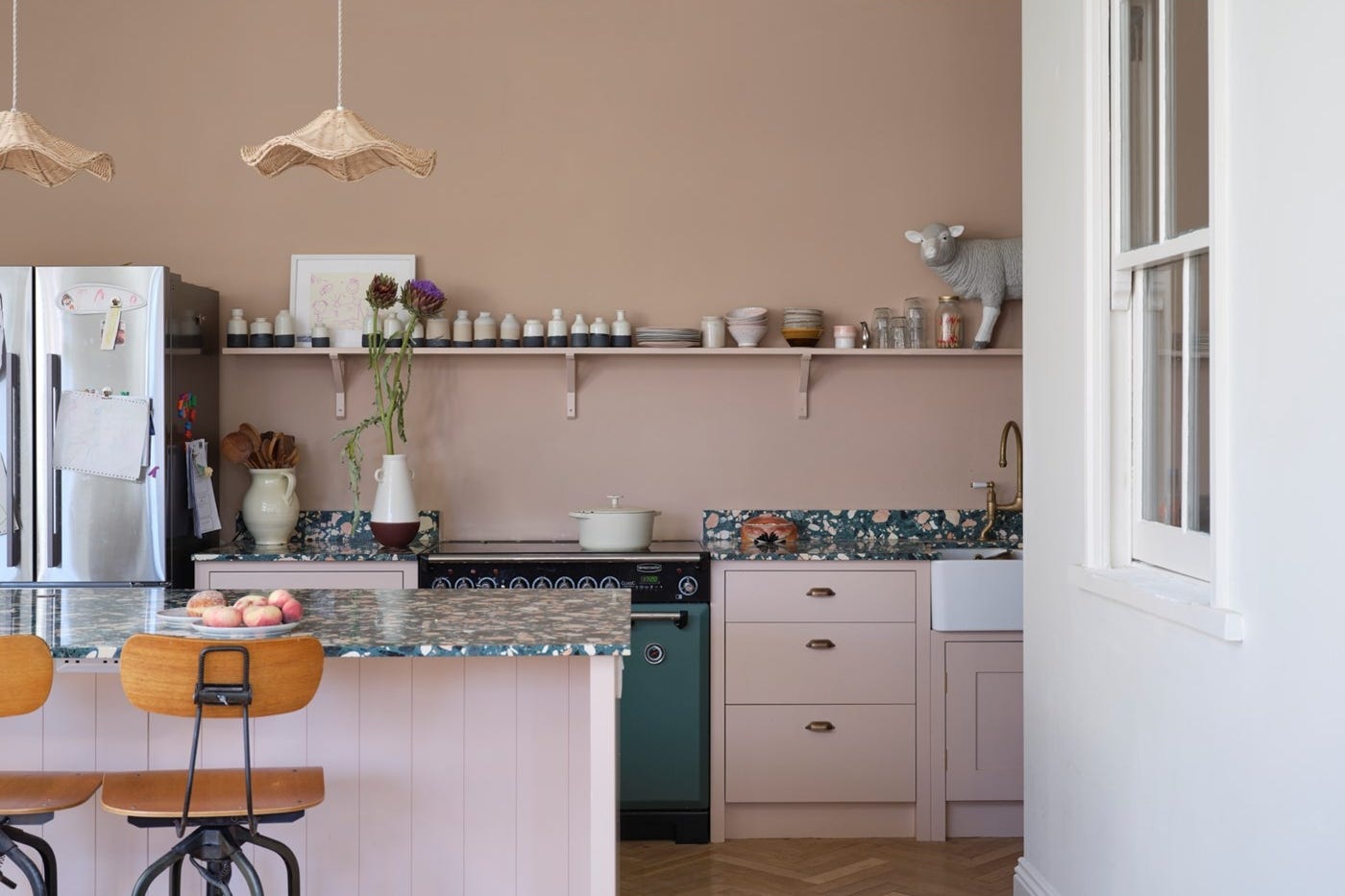

Walls: , Cabinets: . Kitchen by British Standard.
Refitting the entire kitchen isn’t the only way to completely transform the heart of your home – it can be as simple as treating cupboards, cabinets and islands to a new coat of paint with our hard-wearing . We’ve gathered a few of our favourite ways of combining colour in the kitchen, plus your step-by-step guide to painting cabinetry to perfection.
All-Over Colour
Painting cabinets and walls in the same or similar shade can look very striking, as this British Standard kitchen in and proves.
If you’re feeling bold, you can even bring the floor in on the fun – scuff-proof Modern Eggshell is tough enough to withstand everything from muddy feet to spilt milk.
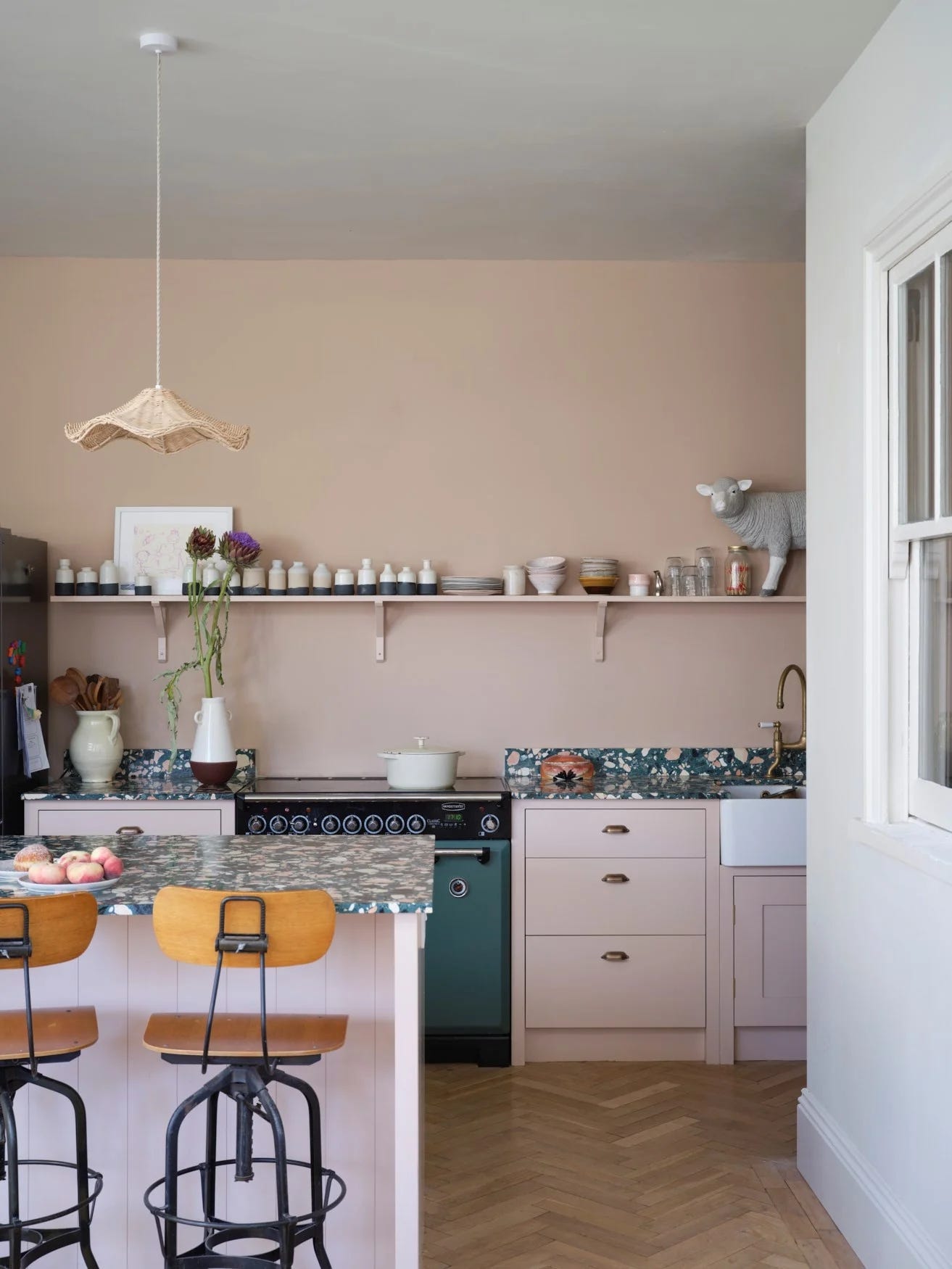

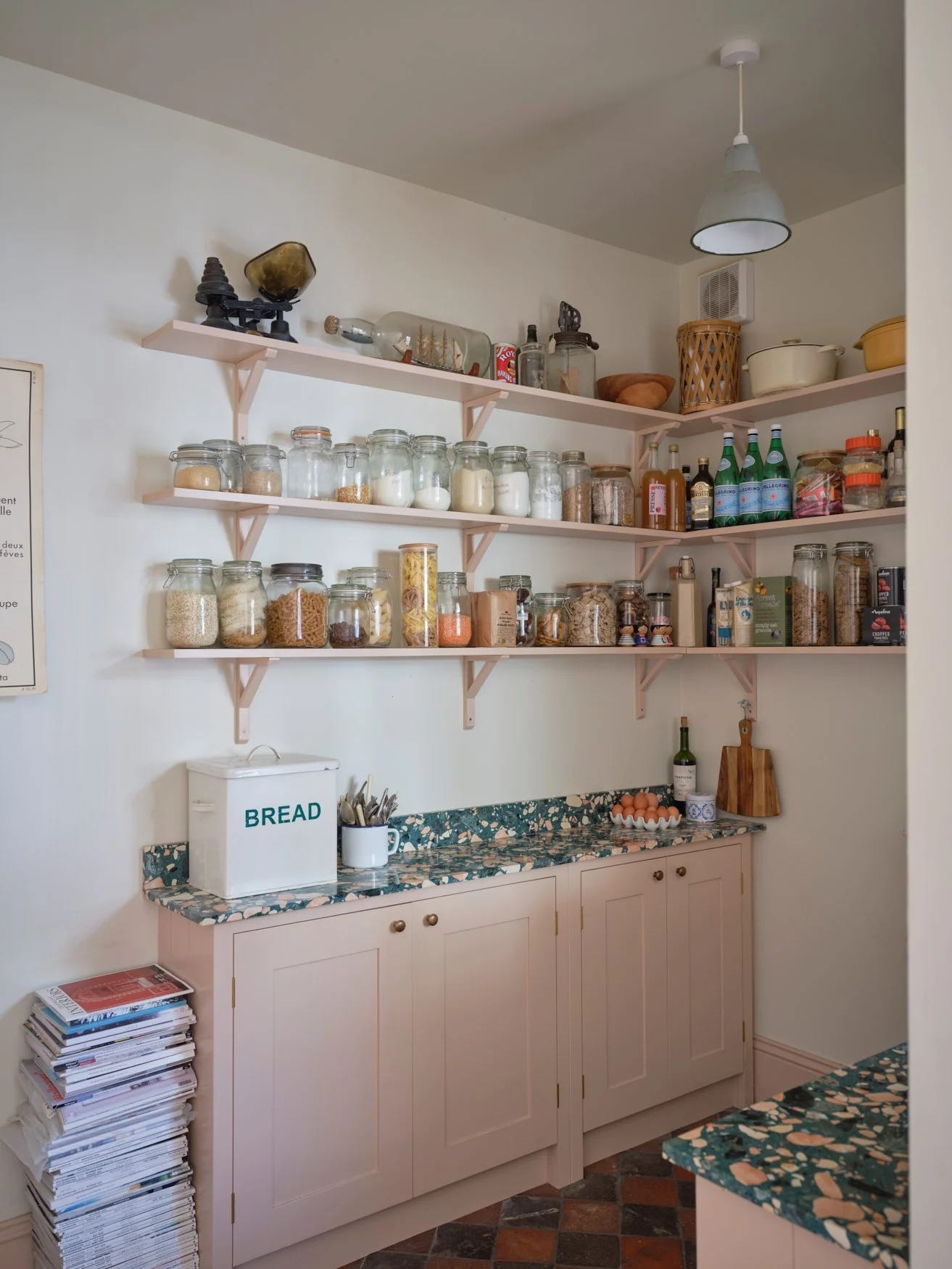

Pretty in pink
Walls painted in in Modern Emusion and cabinets painted in in Modern Eggshell. Kitchen by British Standard.
Keep it in the Family
Creating a palette with shades from the same colour family is a great shortcut to a beautifully cohesive scheme. This light, bright country kitchen features pale grey on walls and the slightly stronger on cabinets, with a dramatic island for a grounding effec
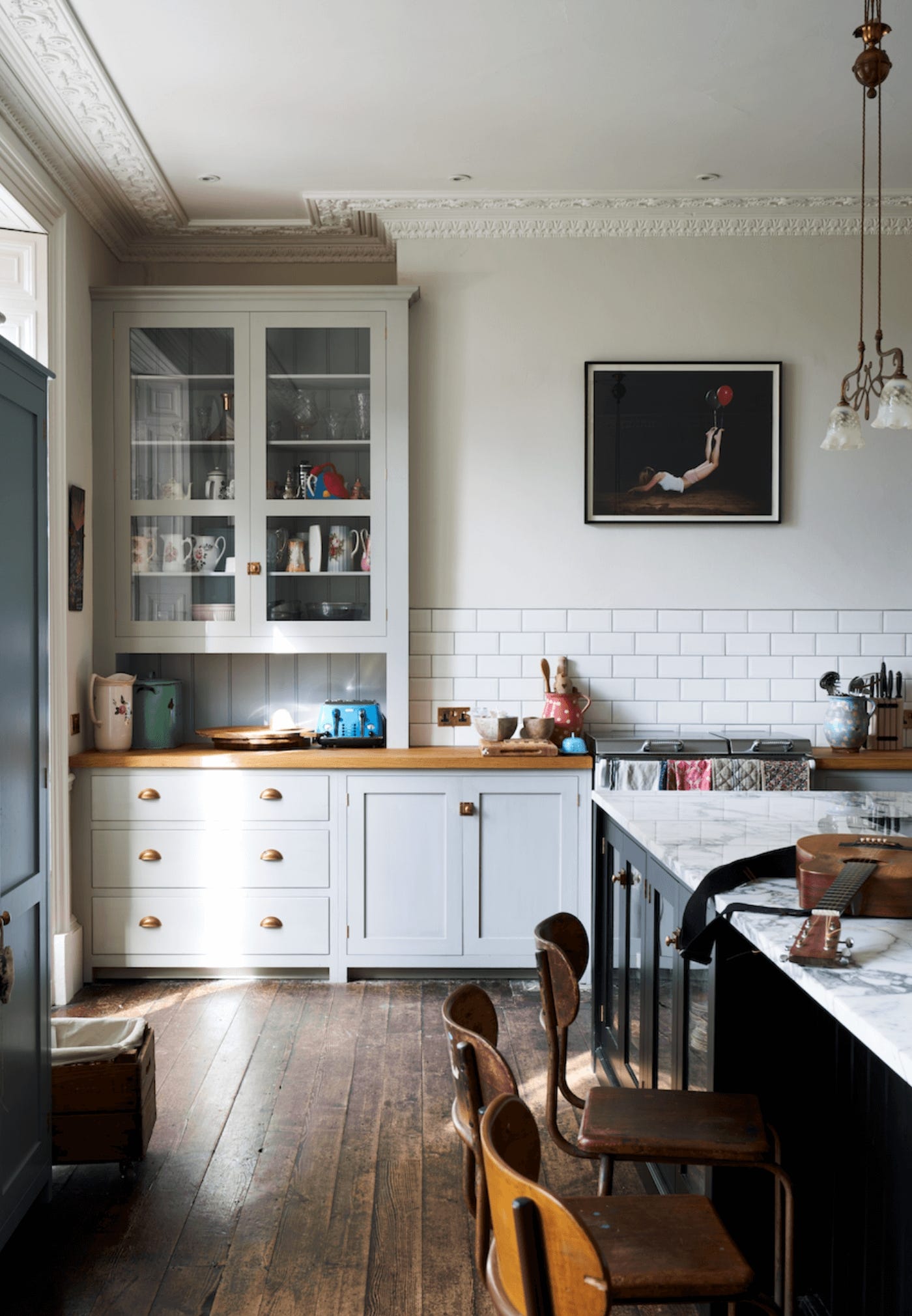

Soft contrast
Walls: in Modern Emulsion; Cabinets: ; Island: ; Larder cupboard: (all Modern Eggshell)
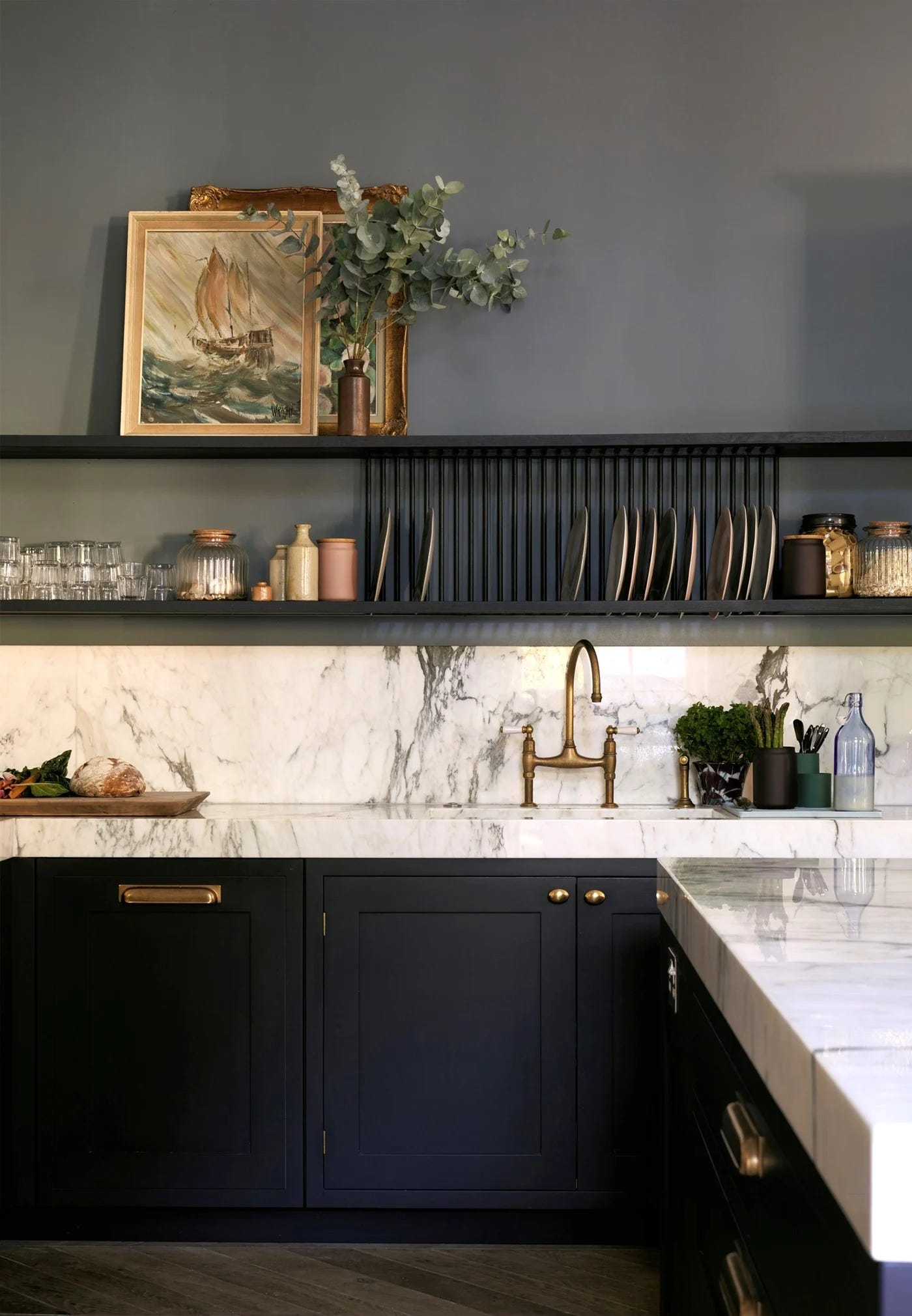

Cool blues
Painted in in Modern Emulsion and in Modern Eggshell
Go Bold
For a really striking look, don’t be afraid of unexpected colour combinations. walls and cabinetry make a bold, beautiful pair in this contemporary kitchen, where a simple wooden worktop and sleek fittings step back to let the rich hues of the walls and woodwork shine.
If you prefer a lighter touch, you could try swapping Paean Black for , as the owners of this compact kitchen-diner have done, for an effect that’s lower contrast but still high-impact.
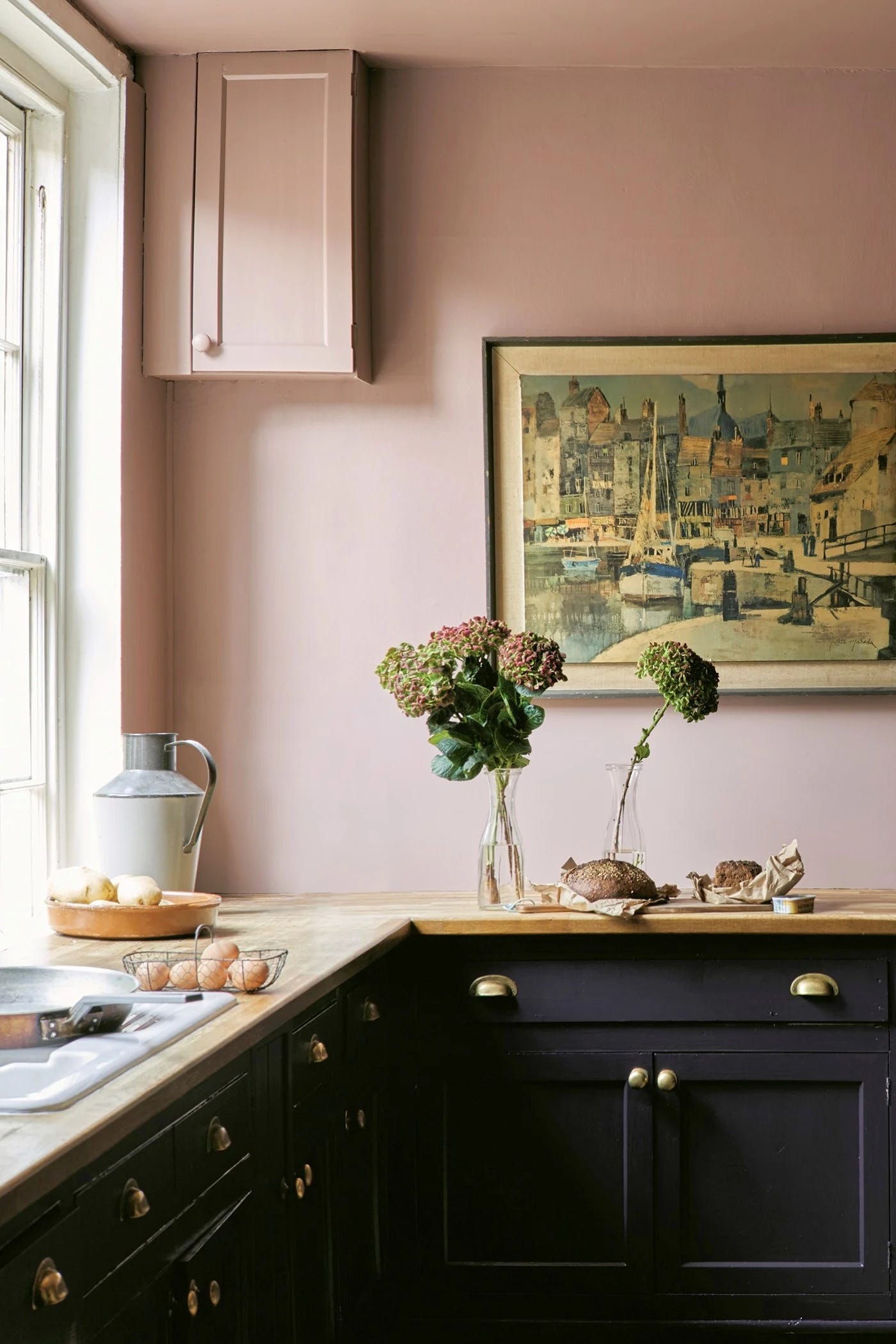

Rich tones
Painted in in Modern Emulsion; in Modern Eggshell
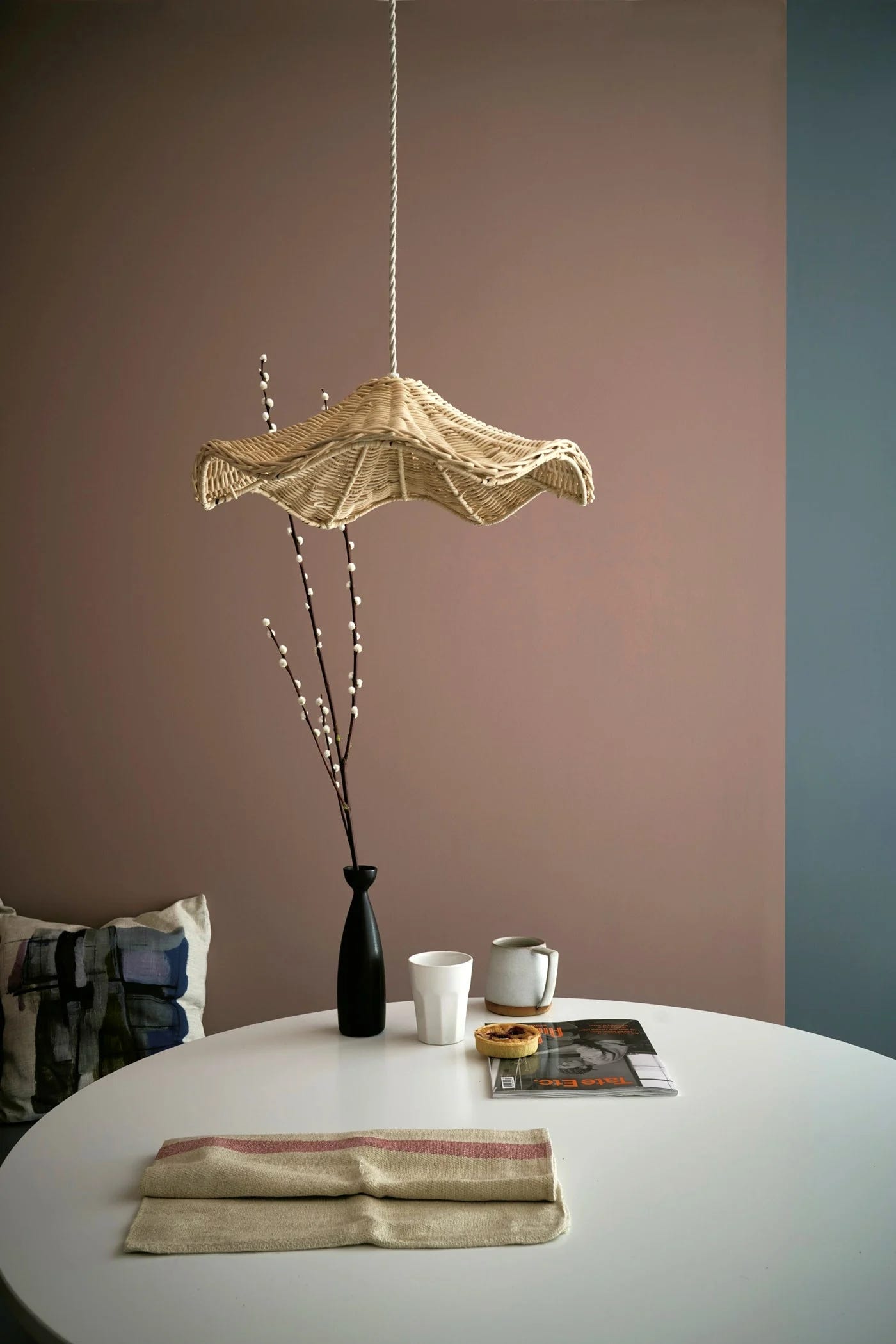

Opposites attract
Painted in in Modern Emulsion; in Modern Eggshell
How to Paint Kitchen Cabinets
It’s easy to breathe new life into your kitchen units and cupboards with our hardwearing kitchen cupboard paint. Here are our step-by-step guides to painting kitchen cupboards with our toughest interior finish – the mid-sheen, easy-to-clean Modern Eggshell – with guidance on the three different surfaces you’re likely to encounter.
For new, unpainted wood
• Ensure all surfaces are sound, clean and dry, and free from dirt, grease and other contaminants.
• Lightly sand the surface to improve the paint’s adhesion.
• Use Farrow & Ball Wood Primer & Undercoat in the recommended colour tone for your topcoat*, to patch-prime any knotty or resinous areas.
• Apply one full coat of Farrow & Ball Wood Primer & Undercoat in the recommended colour tone for your topcoat.*
• Apply two coats of Modern Eggshell, allowing the recommended drying time between coats.
For previously painted wood
• Ensure all surfaces are sound, clean and dry and free from dirt, grease and other contaminants.
• Strip and sand any areas of paint that have peeled or blistered.
• Blend the edges of any old paint patches to smooth out the surface.
• Lightly sand the surface to improve the paint’s adhesion.
• Use Farrow & Ball Wood Primer & Undercoat in the recommended colour tone for your topcoat*, to patch prime any bare, filled, knotty or resinous areas.
• Apply one full coat of Farrow & Ball Wood Primer & Undercoat in the correct recommended tone for your topcoat*.
• Apply two coats of Modern Eggshell, allowing the recommended drying time between coats.
For MDF
Depending on how tightly bound the fibres of your MDF surface are, you may need to take extra precautions when painting. If the fibres start to become raised as you apply your paint, lightly sand the surface between coats for a smooth finish.
When sanding any surface prior to painting, the creation of dust should be kept to a minimum and a dust mask should be worn as a sensible precaution.
• Lightly sand the edges of the MDF to provide a sound surface and to reduce paint absorption.
• Apply one coat of Farrow & Ball Wood Primer & Undercoat in the recommended colour tone for your topcoat.*
• Allow a minimum of four hours’ drying time between coats.
• Apply two coats of Modern Eggshell, allowing the recommended drying time in between coats.
*Our Primers & Undercoats are available in four tones to enhance the depth of your chosen colour. Check the product page for your topcoat colour to see which shade is recommended.
